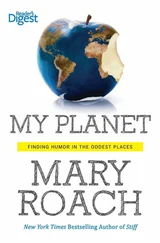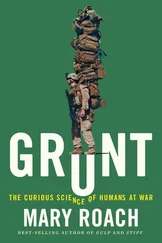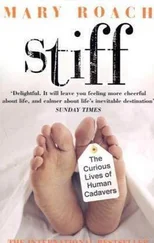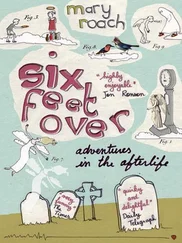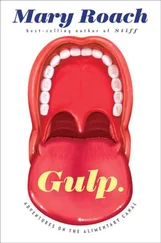“Nah,” said Whitson. She had more pressing concerns. Breathing during the 8 G’s of reentry, for instance, and not throwing up in front of Kazakh farmers in the field where they’d landed.
On her first ISS mission, Whitson said, she exercised so much that some of her bones were denser [70] You often read that astronauts’ skulls get thicker in zero G. I assumed that this was because the extra fluid in the top half of the body plumps the brain, and that the body responds to the increased pressure by thickening the cranium—just as it responds to increased blood pressure by thickening the arteries. “Interesting hypothesis,” said NASA physiologist John Charles. Then he told me it’s not true that living in space makes astronauts’ skulls thicker. Or not literally anyway. Charles says they do routinely develop the “space stupids”—cognitive impairment brought on by “sleep deprivation, over-scheduled time-lines, and all the other indignities we heap onto astronauts.”
than they were before she left. Her overall loss was less than 1 percent. “I did so many squats that I actually increased some in my hips.” Tom Lang, who has studied the skeletons of ISS astronauts, is not overly reassured by things like this. The returning astronaut’s total bone mass can be very similar to what it was before the mission, but that mass is distributed differently. Most of the regrowth takes place in the parts of the bone needed to support walking. But the parts of the hip that would break in a fall were nowhere near where they had been, leaving women like Whitson vulnerable to fractures in their retirement years.
When you fall, the top of your hip—or more specifically, the femoral neck and greater trochanter at the top of your thighbone—takes the brunt of the force in a side-smack manner. That’s not the same architecture that gets strengthened when you jog or do squats. The parts of the bone that are stressed by walking and everyday activity hold up surprisingly well with age. The body tends to redistribute bone to those areas—at the expense of other structures, including the ones you fall onto. For this reason, some osteoporosis experts feel that fall prevention is a better way to avoid broken hips than is load-bearing exercise.
I asked Tom Lang whether anyone had looked into the possibility of preventing hip fractures by simply thwacking the aged on the sides of their hips a few times a day. Not hard enough to break anything, obviously, but vigorously enough that the impact would stimulate the osteocytes to strengthen the structure. I didn’t expect him to say yes. He told me to contact Dennis Carter at Stanford University.
“It was just a concept,” said Carter when I called. “We never built it.” It didn’t thwack, it squeezed. “You’d sit in a lounge chair and have things at your sides squeezing your hips, right at the greater trochanter, where people fall and hit their hips.” It seems like a smart idea, but the companies Carter approached wouldn’t touch it. Because they thought the hips might break and the ladies would sue? “That, yes. And I think it was just too weird for them.”
Is it possible to bolster one’s hip bones by doing some type of controlled fall? Here too, I did not expect a yes. Carter told me that a graduate student at the Oregon State University Bone Research Laboratory had looked into this. As part of her thesis, Jane LaRiviere had subjects lie on one side, raise themselves up 4 inches, and then drop onto a wood floor. They did this thirty times in a row, three times a week. At the end of the trial, scans showed a statistically significant, though small, increase in bone density in the femoral neck on that side, as compared with the undropped-upon side. One of LaRiviere’s professors, Toby Hayes, felt that if the impacts had been a bit harder and the study lengthier, the results might well have been more impressive.
When you get right down to it, nothing works particularly well. Calcium’s a bust. To a certain extent, so is exercise. Bisphosphonates have come under scrutiny for giving some patients necrosis of the jawbone. “The state of the art for countermeasures right now,” John Charles allowed, “is the same as it was forty years ago.”
The astronauts don’t care. “They want to go to Mars,” says Charles. “That’s what they joined the program for.”
WHITSON IS CONFIDENT that someone will come up with a good, safe drug solution by the time a manned Mars mission becomes a reality. A more likely scenario is that genetic testing will by then play a part in astronaut selection. (There’s a large hereditary component to bone loss.) Charles envisions NASA recruiting Mars astronauts who are “almost bulletproof—people who never had a kidney stone in their lives, that come with high bone density, good cholesterol numbers, high radiation insensitivity…”
The bones of black women are 7 to 24 percent denser, on average, than those of white and Asian women. (I don’t have statistics for black men, but presumably they have sturdier bones as well.) I asked Charles whether NASA ought to consider an all-black crew for Mars. “Why not?” he said. “For decades, we had an all-blond, blue-eyed program.”
An all–black bear crew would be another way around the bone-loss conundrum. Black bears emerge from their dens after four to seven months in bed with bones as strong as when they turned in. There are researchers who believe that hibernating bears may hold the key to treating and preventing bone loss. I talked to one of them, Seth Donahue, an associate professor of biomedical engineering at Michigan Technological University. Donahue said that hibernating bears’ bones do break down, just like bed-resters’ and astronauts’ bones. What’s different is that their bodies take the calcium and other breakdown minerals out of the blood and reapply it to their bones. Otherwise the calcium level in their blood would build to a lethal concentration. Because during those four to seven months, the bears don’t get up to go to the bathroom. All the bone minerals that get dumped in the bloodstream as the bones dismantle themselves would stay there, accumulating. “So they’ve evolved a method to recycle that calcium.” And therefore not die. The bone protection is “a lucky consequence.”
Donahue and others have been studying the hormones that control bear metabolism to see whether they can identify some component that will help postmenopausal women (and astronauts) grow new bone. They’ve nominated bear parathyroid hormone. Donahue has a company that makes a synthesized version, injections of which are being tested in rats and eventually, if all goes well, will be tested in postmenopausal women. Even human parathyroid hormone makes women grow bone. It’s one of the most effective ways to increase postmenopausal bone density. Unfortunately, high doses make rats grow bone cancers, and thus the Food and Drug Administration limits prescriptions to one year and for women who’ve already had fractures. Donahue said bear parathyroid hormone doesn’t appear to have any adverse side effects, so keep your claws crossed that it pans out.
There’s another reason hibernating bears are interesting to NASA. If humans could be made to hibernate, to breathe one-fourth as much oxygen and eat and drink nothing for six months of a two-to-three-year Mars mission, imagine how much less food and oxygen and water one would need to launch. (The less baggage on board a spacecraft, the cheaper it is to launch. Once it reaches the speed needed to escape the pull of Earth’s gravity and leaves behind the air drag of Earth’s atmosphere, a spacecraft basically coasts to Mars.) Each extra pound of weight launched adds thousands of dollars to the project budget. Science-fiction writers glommed onto the idea decades ago, outfitting fictional spacecraft with high-tech, climate-controlled hibernaculums.
Читать дальше

